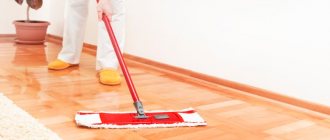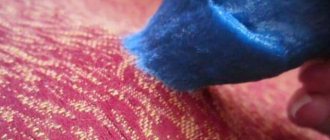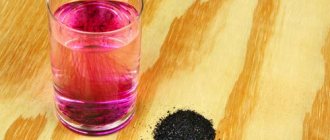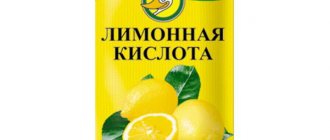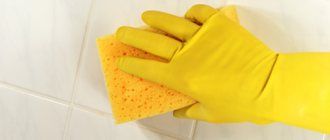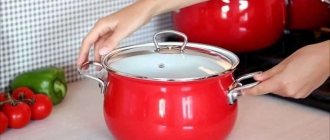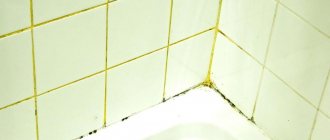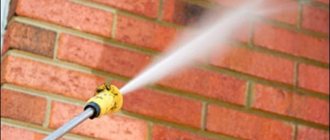How to remove stain from wood?
You can use a 15% aqueous solution of hydrogen peroxide with the addition of ammonia in such an amount that the composition has a strong smell of ammonia.
Wet the surface of the wood with this mixture and leave it for several days, after which it becomes completely white. After such bleaching, the wood surface does not require any washing.” Look, peroxide can really burn your skin, so only wear rubber gloves. Sold in pharmacies as tablets.
Best regards, Vladislav.
PS. If we are really talking about stain, and not about colored varnish.
| Mosinman |
| xwing |
It won’t remove the stain normally. All this home-grown nonsense like Oven Cleaner or Orange Blast was invented IMHO from excessive stinginess. There is an amazing thing called Wood Bleach, it will return the color one or two times. However, it is more expensive than Oven Cleaner
My thought is that there are good products created for working with wood, there is no need to look for replacements.
| headhunter |
| Kadett |
| Mosinman |
It won’t remove the stain normally. All this home-grown nonsense like Oven Cleaner or Orange Blast was invented IMHO from excessive stinginess. There is an amazing thing called Wood Bleach, it will return the color one or two times. However, it is more expensive than Oven Cleaner
My thought is that there are good products created for working with wood, there is no need to look for replacements.
I wrote – it works, it’s been tested. By me personally. And Wood Bleach is, well, a buck more expensive. It's not about the money. Although, of course, it is correct to use specially designed products for wood. It’s just that the wood on the locker is different from the wood on the butt of a hundred-year-old rifle, since no one has been carrying the locker in their hands all this time. That's why I use Oven Cleaner to remove all the dirt at once.
On the issue of drying oil. Gentlemen, send on. Fuck all these ancient recipes with natural drying oil. Are you going to live forever? Should you dry the wood according to the year? Buy normal bourgeois oils for impregnating wood at a building materials store. Three days and everything is dry and beautiful. You can shoot.
| headhunter |
Drying oil, I suppose, “natural of the highest quality,” from the nearest construction base?
It’s done like this: onto a barrel of synthetic pseudo-drying oil “oxol”, which dries for years, add a bucket of natural oil, bottle it – and off you go! I bought a couple of bottles of oil at an art salon. The oil is liquid - even without boiling down. It took a month and a half to dry to hardness. if drying oil is applied, the alcohol stain will lie unevenly, in spots. water - will not lie down at all. so you have to wash it. perhaps, really - eat. Xia. organic solvent + sawdust + household rubber gloves. Of the solvents, turpentine is the most harmless to wood, although others dissolve faster.
| Antti |
. I bought a couple of bottles of oil at an art salon. The oil is liquid - even without boiling down. It took a month and a half to dry to hardness.
How much is needed for one Tikkov stock? I bought one 100 gram pizirek, and now I’m thinking – isn’t that enough?
| Mosinman |
How much is needed for one Tikkov stock? I bought one 100 gram pizirek, and now I’m thinking – isn’t that enough?
| headhunter |
How much is needed for one Tikkov stock? I bought one 100 gram pizirek, and now I’m thinking – isn’t that enough?
it took one and a half for the “Moose” stock – but it’s birch. like a sponge.
Nitrocellulose varnishes
Nitrocellulose
The base includes nitrocellulose, which is diluted in organic solvents. The applied layer will take a long time to dry, so you should take the item away from open windows and doors. The resulting hard coating will be resistant to both sunlight and mechanical loads.
When working with this varnish, you need to take care of your protection: wear a respirator, safety glasses and rubber gloves.
The easiest way to remove stain from hands, linoleum and plastic
Stain is an excellent wood treatment product. It can breathe new life into old frames, refine furniture, and protect things made from wood from rot. But its significant drawback is the ability to tightly stick to surfaces, eating deeply into them. Let's figure out how to wash stain from your hands, remove stains of this product from clothes, and remove from the floor and furniture.
Alcohol varnishes
Shellac
A group of transparent and translucent coatings that can be used to add shine to a surface and also protect it from external factors. They include complex components:
- shellac;
- sandarac;
- dug;
- synthetic resins.
Carefully study the label with the varnish; the strength of the alcohol used must be at least 90º. Ethyl alcohol can be used as a solvent.
The right product will highlight the structure and tone of the wood.
What is stain and why is it difficult to clean?
Stain is a wood treatment product. It is also called “beitz” (this term comes from the German word “Beitze”). It gives the wood color and protects against rot, bacteria and mold. Unlike paint, stain does not hide the texture of the wood. The pattern of growth rings after processing stands out brighter, turning into the selected color. This effect is explained by the ability of the stain to penetrate deeply into the structure of the material.
In this ability lies the secret of the extreme “corrosiveness” of stain stains. On many forums there is an opinion that if clothes are damaged by stain, then it is easier to throw them away than to wash them. It is also bad, according to supporters of this point of view, to wash the floor or furniture. At the same time, other users are confident that stains can be removed. You just need to choose the appropriate method.
Water-based, alcohol-based, oil-based and wax-based wood stain. Surface preparation
In private houses, country houses, and often in apartments, wooden products are used, such as doors, windows, flooring, gazebos, furniture and decorative parts.
And no matter how magnificent wood is in its original form, due to the constant influence of external factors and time, it gradually loses its consumer qualities and attractiveness. What to do in such a situation? The answer is very simple: if you want to preserve the natural structure and appearance of wood for many years, stain will help you. Stain is not paint; it will not hide the texture of the wood (you can see this in the photo)
Preventing stains
It is easier to prevent the appearance of a stain than to later try to wash off the stain from various coatings with unclear results, risking ruining them forever. Therefore, before starting work, carefully consider your protection strategy:
- Cover the floor in the work area with several layers of newspapers.
- Before starting processing, dress in work clothes. Protect your hands with gloves and your hair with a hat.
- Cover the workbench or table on which the item being processed is dried with polyethylene.
Always close the lid of the stain container tightly when taking breaks from working. Analysis of reviews on thematic forums shows that most problems are a consequence of an open can being knocked over due to negligence.
While working, do not throw the brush anywhere, but place it on a prepared tray from which it will not fall out onto the table. And keep a rag handy to wipe off any excess drips from your brush, jar, and workpiece before they hit the floor.
If it does spill, what should you do?
No matter how careful you are, it only takes a few stray drops to create noticeable stains on the floor, furniture or hands. In this case, only quick and correct actions will help.
Analyzing the composition
First of all, we study the label on the jar of the product. Our task is to understand which group the stain belongs to.
- Water-based stains are either dry powders that are diluted with water before use, or ready-made solutions. The chance of washing such a composition from hands, clothes or floors is highest.
- Oil stains are based on drying oil - a fatty substance based on vegetable oil. It has almost no smell, but it dries for quite a long time and is practically insoluble in water.
- Alcohol solutions. This stain is based on denatured alcohol, which evaporates very quickly. Typically, such stains dry out almost instantly, making them difficult to remove.
- Acrylic stains are made from synthetic resins. They dry quickly and successfully resist many solvents. This option inspires the least optimism regarding the possibility of completely removing the stain.
Having figured out the type of stain, it is easier to choose a solvent for removing stains.
Wrong actions only increase the damage. Therefore, it is not recommended to rub the stain, smearing it over the surface. Before cleaning linoleum with a solvent, try it on a small piece in an inconspicuous place to make sure that the caustic liquid does not destroy the top layer of the floor covering. Do not roughly scratch the surface, as it will be difficult to polish the scratches later.
How to remove stain from clothes?
The main task when removing stains from clothes is to wash off the stain without destroying the dyes with which the fabric is painted.
This method of cleaning clothes is recognized as the most effective:
- Dilute oxygen bleach with water (the finished mixture should resemble a thick paste in consistency).
- Apply the gruel to the stain.
- Allow the bleach 20 minutes to break down the stain.
- Wash the item in the washing machine.
Most often, even the use of bleach does not completely eliminate the stain. But it is possible to improve the appearance of clothes.
The traces remaining after staining can sometimes be disguised with decorative stripes, embroidery or a badge.
We wash our hands after work
Removing fighter from your hands is not an easy task. The dye penetrates deeply into the epidermis, and it is often impossible to remove the stain completely. Working with solvents is only allowed with great caution, since alcohol, acetone and other liquids dry out the skin greatly. Often, complete removal of stains occurs only after a few months, when the colored epidermis completely peels off from the hands.
Woodworkers consider the most effective method of removal to be hand washing a small rag (for example, a rag stained with stain) in a stain-removing composition. If the stain is water-based, use water for washing; if it is alcohol-based, use denatured alcohol. The combination of solvent exposure and prolonged friction provides good cleaning.
After you finish washing your hands, treat your skin with a nourishing cream or ointment based on dexpanthenol (“Bepanten”, etc.). This will protect the skin from drying out.
Cleaning linoleum and plastic
Remove stains from plastic or linoleum with acetone. White spirit can also be used. But you need to act carefully. First, the stain is soaked with cotton wool soaked in a solvent, then the top layer is removed. And so on several times until the result is achieved.
It is very difficult to remove stain. Therefore, every effort should be made to protect surfaces that are not planned to be treated from it.
Construction portal No. 1
Often, before painting or re-varnishing a wooden surface, it is necessary to remove the old layer of varnish. There are several ways to do this: wood varnish remover, mechanical method, heat treatment. Choosing a specific option often causes certain difficulties, since a person without skills is rarely able to decide on his own. The result of this is damage to the processed material.
Before painting or re-varnishing a wooden surface, it is necessary to remove the old layer of varnish.
Below we will talk about the main methods of removing nail polish, as well as the advantages and disadvantages of certain approaches.
Surface preparation
Defects and cracks are eliminated with putty.
It is not enough to simply remove the old layer; the surface needs additional processing, that is, grinding. Regardless of whether the material is new or old, it must be carefully examined for defects. If seams, cracks and knots are found, they should be eliminated.
The gaps at the joints are sealed with a special putty for wood. After drying, the irregularities are smoothed out with fine-grain sandpaper. There is no need to process raw wood, since all actions will be meaningless: when drying, the wood is deformed, and accordingly, the applied layer is also deformed.
Nail polish removal methods
It must be said right away that only the most popular surface cleaning methods are covered here. There is no universal recipe that is applicable in all situations.
The choice of method depends on many variables, including:
- The type of base is of considerable importance, since it makes a difference what exactly needs to be cleaned - furniture or parquet.
- Varnish composition. Different options are relevant for different compositions.
- Layer thickness. It's one thing to remove one layer, quite another to remove many old layers.
Treatment with chemical compounds
Treating wooden surfaces with chemicals (also called stripping) is one of the most popular methods of removing varnish when it comes to delicate surfaces of furniture or other delicate objects. The chemical compositions can be powders, gels, specialized liquids or a regular solvent.
The choice of a specific option depends on the task at hand. When it comes to shellac, denatured alcohol is best. Liquids are most applicable to surfaces where there are not many layers - up to three. The fact is that the liquid tends to erode quickly, which is why it is simply not able to absorb deeply enough. Powder chemistry is the best choice for large-scale work, since such materials can be preserved for a long time. But gels and paste-like materials are best suited for removing a significant number of layers of varnish or paint.
Denatured alcohol is best for removing shellac.
Recommendation: powders are created in this consistency for ease of storage and transportation. They should be used diluted with water to form a thick paste-like mass.
It is best to apply the mixture in a vertical position. This is not only more correct from a technological point of view, but also more convenient. Gels and pastes can remove up to a dozen layers of old coating at a time.
Instructions for removing varnish from a wooden surface
The entire coating removal process consists of four stages.
First stage: applying wash
We wet the brushes in the chemical composition and apply a decent layer to the surface. We proceed from the rule that the brush should be passed over one place only once, without repetition.
Second stage: film
To enhance the washing effect, we organize a compress, for which we cover the surface to be treated with a polyethylene film. The average waiting time for the effect of a compress is from 1 to 4 hours, depending on how many layers are to be removed. A good sign is if the remover changes color and becomes dark brown or brownish, and the varnish begins to swell.
Third stage: removing varnish
After the varnish has become softer, it must be removed with a spatula. The edges of the new spatula are too sharp. Therefore, it is recommended to round them slightly using a sharpening stone. This will make working with wood more accurate.
The pressure on the swollen material must be careful. You probably won't be able to completely get rid of the varnish in one go. Then you need to repeat the operation again. However, it happens that one pass with sandpaper is enough to remove the remaining varnish film.
Fourth stage: neutralization of the chemical composition
Do not forget that the chemical composition remaining on the wooden surface must be washed off either with plain water or with vinegar solution (500 grams of water per 100 ml of vinegar). You need to wash off the remaining chemicals thoroughly, but not for too long, since moisture is harmful to wood, and the surface being treated at this time is deprived of protection. As soon as the washing is completed, the surface should be wiped well, and then the item should be moved to a dry and ventilated place. Moreover, direct rays of the Sun should be avoided. After drying, the wooden product can be re-varnished.
The chemical composition remaining on the wooden surface can be washed off with plain water or vinegar solution
In addition to liquids, spray cans are also used. As a result of spraying the spray, a foam layer appears on the surface being treated. Sprays are easy to use, however, their disadvantage is the ability to wash off only minor layers.
Important! Work with chemical compounds must be carried out in compliance with safety rules. The room must be well ventilated. For protection you need to use special gloves and respirators.
Acetone is also used as a solvent. First of all, a fabric compress is made, thoroughly soaked in acetone. Then the compress is applied to the areas intended for cleaning. Cover the compress with plastic wrap and wait 10-15 minutes.
Note! Removing the varnish layer on furniture or chipboard panels can damage the surfaces, as the decorative film can be damaged. The best material for removing varnish is natural wood.
Removing old stain (FINISHING MATERIALS)
- Works (10)
- Publications (1)
Gentlemen, good morning. I ran into a problem, maybe someone has already encountered similar things? Friends asked me to put the carved icon in order, it was all cracked and very bent (I seem to have solved these problems), but there was one more icon left - the icon was covered with some kind of water stain of a dirty blue color, I was asked to change this color to the color of oak ( The icon is carved from linden). Surely someone has already encountered similar problems and solved them, we need your help
- Login or register to post comments
- Works (67)
- Publications (3)
Dmitry, I’m afraid that it won’t be possible to remove the stain. Try to remove thin shavings somewhere in a corner with a cutter. You will see how deeply the stain has penetrated into the wood. I had to deal with this when restoring a table mirror. There I simply cut off the painted layer from all the threads. Will this happen with an icon? Hard to say.
- Login or register to post comments
- Works (10)
- Publications (1)
Leonid, somewhere far away, hoped that he would not have to cut off the stained layer. Is there really no chemistry for such purposes? On the cut, the stain penetrated an average of about 1.5 mm, with some fibers dyed even deeper, reaching two to two and a half. Large icon - 60x40cm Face Not Made by Hands.
- Login or register to post comments
- Works (54)
- Publications (45)
Such things should be restored by professionals, suddenly Rublev.. And give advice on the Internet on how to manage the operation.. what to trim, what to trim with, and how much.. In a word - proctology..
- Login or register to post comments
- Works (10)
- Publications (1)
The icon was carved a little over ten years ago, and the master was not even OAK. I was hoping to hear about chemistry, not medicine
- Login or register to post comments
Mechanical cleaning
The essence of the technique is surface scraping. In other words, this is stripping off the varnish layer using a construction tool - a tsikli, which is a sharpened steel plate with a handle. Moreover, the handle is at an angle to increase pressure on the surface. You can purchase a cycle or make it yourself.
You can remove varnish from a wooden surface using a scraper.
You can do without a special tool by using glass. But this device has a drawback - it quickly becomes dull. If you choose glass, you need to remember to use protective gloves to avoid getting hurt.
If the varnish layer is thin, you can use regular sandpaper. Moreover, it can be used either manually or by attaching sandpaper to an angle grinder. There are three types of grinding machines:
Vibrating machines are the most affordable. This tool can be used to clean furniture.
The working process is as follows: sandpaper is installed on the “sole”, which is used to process the surface. This method of removing varnish is very dusty, but compared to manual processing, this option will give a much more aesthetic surface.
Advice! Don't forget to protect your surroundings from dust. Plastic film will do for this.
The main advantage of mechanical processing compared to chemicals is that toxic and unpleasant-smelling substances are not used. In addition, if you work carefully, this method of cleaning is more gentle on the wood than in the case of chemical compounds. Mechanics have one drawback - the process is long and labor-intensive.
The main disadvantage of mechanical processing is that the process takes a lot of time and effort.
Advice! Since mechanical cleaning takes a lot of time and also requires accuracy, it may be more rational to use the services of a hired specialist. In addition, the specialist is equipped with professional equipment, which will improve the quality of work.
Oil varnishes
Oil varnish
Among the main components are resins and pigments that are dissolved in oil. The consistency can be liquid or semi-liquid, which allows it to be applied to the surface of wood with a brush or roller. Affordable price is an attractive and positive factor for the majority of the population. After treatment, a thin transparent film appears on the surface, which acts as a protective barrier to moisture and ultraviolet healing. A characteristic yellow tint may appear.
A high degree of protection allows you to coat wooden products that are in the open air with oil varnishes.
Heat treatment
The essence of this process is to heat the wooden surface, due to which the varnish adheres less firmly to the surface. In other words, the varnish begins to crack, after which it can be pryed off with a tool (a chisel or spatula will do) and slowly removed.
Please pay attention to the following nuances:
- During work, you need to use protective equipment (gloves and goggles), and also ventilate the room. The fact is that when heated, the varnish releases toxic substances, and when the material is mechanically separated, pieces can bounce off of it. Also, do not forget about fire safety.
- If the varnish is heated up, but does not peel off, but becomes charred, you need to change the cleaning method and you cannot do without chemicals.
- Gasoline or gas burner. Such devices are quite inexpensive. However, the burner must be used with extreme caution, as the work will be carried out with an open flame.
Care must be taken when working with the burner
- Construction hairdryer. The device is similar to a household hair dryer, but has significantly greater temperature capabilities, heating up to 600 degrees.
Note! A standard household hair dryer is not suitable for removing nail polish.
The main advantage of the thermal method is its high speed. However, we must not forget about the danger of overheating the varnished surface, since in this case it may catch fire.
The work is done with both hands: one holds the hairdryer, which heats the surface, and the second holds a spatula for removing nail polish.
How to apply stain?
To apply stain to a wooden surface, you can use the following methods:
- spray gun (spraying method);
- brushes (Painting work, types of brushes);
- roller
How to stain wood
To decide on the choice of tool, you need to pay attention to the following two factors:
- the size of the area that needs to be painted;
- required saturation of the selected color.
Applying stain by rubbing
Note: You can also apply the solution to the surface by rubbing - the product is applied to the surface and evenly using a cloth or foam sponge and rubbed over the entire area. This method is best used to coat porous wood.
Spray gun for painting
For the spraying method, a special device is used - a spray gun. This tool is especially good to use when working with alcohol stains, as well as when processing wood with a non-smooth surface. In this case, it is important to cover all untreated surfaces and elements located nearby with a protective film.
Spraying with a spray gun
Note: Some craftsmen recommend using a combined method of staining - first applying the solution by rubbing, and then coating by spraying.
What brush should I paint with?
The most common and familiar painting tool is the brush. When working with stain, you can also use regular brushes, but it is important to note that not all types of product can be applied using brushes. Typically, a water-based stain is applied to the wood with a brush.
Painting with stain using a brush
Important! Brushes for applying stain must be of good quality. Otherwise, the bristles may fall out, which will lead to defects on the surface.
Paint with a roller or brush?
If you need to paint a small surface, it is recommended to use a roller for this. Thanks to the roller, the application will be more uniform and streak-free than with a brush.
How to remove stains from a wooden surface
Wooden surfaces - furniture fronts, countertops, floor coverings - very often suffer from the appearance of various stains. They are often more difficult to remove than from fabric. Let's figure out what products will help you get rid of stains that have appeared on a wooden table or floor.
Stains from water or hot water
This is the most common option. Water stains are usually whitish in color and are especially noticeable on dark wood. You can display them in several ways:
Wax stains
Here, too, you can’t do without warming up. The wax should be melted with a hairdryer or iron (through a cloth), and then carefully removed. Afterwards the wooden surface is thoroughly polished.
How to avoid getting your hands dirty when working with mushrooms
If you follow a few useful recommendations, you can try to protect your hands from darkening:
- collect and clean mushrooms using protective gloves;
- If you don’t have gloves and you can’t buy them, take the thickest cream and lubricate your hands with it (you can use vegetable oil if you don’t have cream). Then the mushroom pigment from the boletus will not be able to penetrate to a sufficient depth of the epidermis;
- To prevent staining from occurring between the space of the nail plate and the skin, run your nails over the hard soap several times.
Paint stains
A mixture of baking soda and vinegar removes such marks well. You can also use baking soda mixed with lemon juice. The mixture is applied with a finger or a sponge to the stain, rubbed well, then the area is polished. Good results are obtained by using a regular school eraser, which will cope with paint stains on lacquered furniture. If the stain is large or the paint layer is thick, you can first carefully remove it with a spatula, being careful not to damage the wood or leave scratches.
To remove such contaminants from a wooden surface, you can use ammonia diluted in water. Or drying oil, or regular talc.
Coffee stain
A mixture of ammonia and glycine will help to cope with this problem. Rub the solution onto a wooden floor or table; after half an hour, the mixture can be removed with a rag.
Such stubborn stains or stains from deeply absorbed water are the most difficult to remove from wood. Can be used:
- household bleach;
- hydrogen peroxide;
- a mixture of water and oxalic acid;
- a mixture of salt and burdock oil. The oil will soften the wood, and the salt will absorb all the excess.
In addition, ink stains on wood are removed with a water-soda solution; marker stains are removed with toothpaste or isopropyl alcohol. If a stain on a wooden floor is caused by a pet, you will have to use antibacterial agents, such as alcohol, to remove the unpleasant odor, and then deal with the stain itself.
In particularly difficult cases, when home remedies do not help, you will have to remove the top layer of wood, for example, with fine sandpaper or using a grinder, and then re-open it with varnish, oil or stain.
How can I remove white from products?
There are several ways to restore the purity and freshness of white leather products:
- Soda and lemon juice . The traces of the pen are generously sprinkled with soda, and then moistened with lemon juice. When combined, baking soda and lemon juice enter into a chemical reaction, as a result of which ink that has stuck into the skin can be easily wiped off with a soft, damp cloth.
- Ammonia and glycerin . The ingredients are mixed in a ratio of 5:1. The resulting mixture is applied to the stain and left for fifteen minutes. Cleansed skin is wiped with a damp sponge.
- A white stationery eraser perfectly removes pen marks from matte white leather (it is better not to use it for glossy surfaces).
White leather should be cleaned as quickly as possible. Prolonged contact with cleaning products may cause unattractive yellow or brown streaks to appear.

